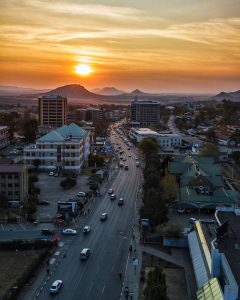A fatal car crash in India sparks concerns over Google Maps
4 min readA fatal car crash in India has sparked a debate over the responsibility of navigation apps like Google Maps in accidents involving users. The tragedy unfolded in the northern state of Uttar Pradesh, where three men died when their car veered off an unfinished bridge and plunged into a riverbed. Police suspect that Google Maps directed the men to take the ill-fated route, which led them onto the damaged bridge, unaware that part of it had collapsed earlier in the year due to flooding.
While locals in the area knew of the collapse and avoided the bridge, the three victims were from outside the region and had no prior knowledge of the hazard. The bridge was not marked with any warning signs or barricades, leaving the men vulnerable. As a result, authorities have filed a police complaint naming four engineers from the state’s road department and an unnamed official from Google Maps, citing charges of culpable homicide.
This tragic incident has highlighted India’s struggling road infrastructure and reignited a broader debate about the role of navigation apps in road safety. Some have blamed Google Maps for not providing accurate or timely updates about road conditions, while others point to the government’s failure to properly secure the bridge or provide adequate warnings for travelers.
Google Maps, the most widely used navigation app in India, has become synonymous with GPS technology. It serves millions of users across various platforms, including ride-sharing services, e-commerce, and food delivery apps. With an estimated 60 million active users in India, Google Maps handles millions of searches daily, but it has faced frequent criticism for leading users astray, sometimes with fatal consequences.
In 2021, a man in Maharashtra drowned after driving into a dam, allegedly following directions from Google Maps. Similarly, two doctors in Kerala died last year when their car drove into a river after following a route suggested by the app. These incidents have led to public outcry, with some urging users not to rely too heavily on the app, especially when road conditions may be unstable, such as during floods.
So how does Google Maps gather and update information about road conditions? The app tracks traffic changes through GPS signals, using real-time data from users to gauge congestion and road usage. Updates also come from governments and users, who report issues like traffic jams or road closures. However, due to the sheer volume of complaints and the global scope of the app, not all reports can be prioritized, leading to delays in updates.
Ashish Nair, founder of mapping platform Potter Maps and former Google Maps employee, explains that the app cannot be held responsible for accidents, as its terms of service make clear that users should exercise their own judgment when following routes. The app’s information may not always reflect current conditions, particularly in fast-changing environments. Moreover, managing global data and tracking every road change is an enormous task, and many countries, including India, lack systems for promptly reporting infrastructure changes.
Nair also points out that India’s lack of a streamlined system for logging and sharing real-time data about road conditions makes it particularly challenging to maintain accurate maps. In contrast, countries like Singapore have established systems for quickly updating road status information, which apps like Google Maps can access. Until India develops a similar infrastructure, Nair warns, inaccurate or outdated maps will remain a persistent problem.
The legal implications of these incidents are complex. Under India’s Information Technology (IT) Act, platforms like Google Maps are considered “intermediaries,” meaning they are not typically held liable for content posted by third parties. This legal protection has shielded Google from many claims in the past. However, if it can be proven that Google Maps failed to update its data despite being provided with correct information, it could be held accountable for negligence.
Advocate Saima Khan notes that the law affords Google Maps some degree of immunity but also suggests that the company could face legal action if it is shown that it did not act responsibly in addressing known road hazards. This raises the question of whether apps like Google Maps have a duty to ensure the safety of their users by updating their maps in real-time, particularly when road conditions change rapidly due to accidents or natural disasters.
As the debate continues, the tragic accident in Uttar Pradesh has underscored the need for better coordination between technology platforms and government authorities. With millions of people relying on GPS apps for navigation, ensuring the accuracy and reliability of these services has become increasingly important. Moreover, improving India’s road infrastructure and data-sharing mechanisms will be crucial to preventing future accidents and minimizing the risks associated with navigation technology.
For now, the families of the victims and the public continue to grapple with the consequences of this preventable tragedy, while the legal and ethical questions surrounding navigation apps like Google Maps remain unresolved.







